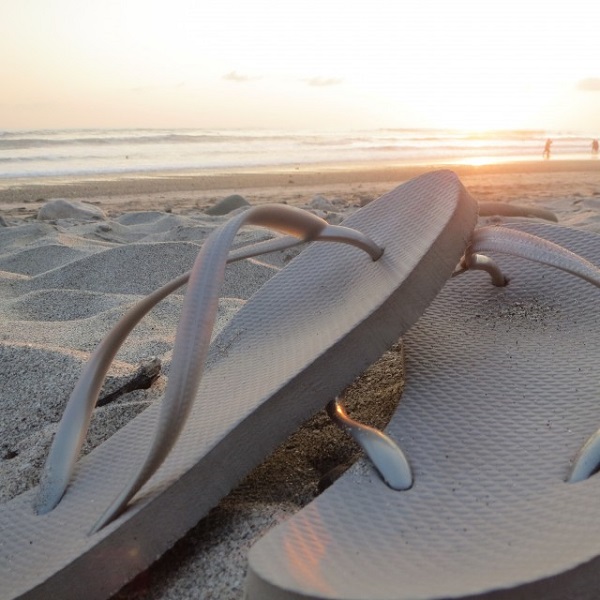Costa Rica contains 5% of the world's biodiversity and only takes up .03% of the world's surface! Because Costa Rica is so diverse, there are many new policies and practices that focus on the sustaining and conserving the environment. Living a life that helps to preserve the environment and resources that are available is an easy task when it's household to household. Costa Rica has some restrictions and regulations being implemented in different regions for protecting different animals or pieces of land (forests).
During my time in Costa Rica as an Environmental Science major, I have seen some great steps toward environmental awareness that most Costa Ricans and then their American students follow. I have learned many different ways to reuse objects that I would normally recycle from my Tico family. As a now "tinga" (Tica and gringa together; gringa is not offensive in Costa Rica), I have also taken on more of the waste reducing and environmental thoughtfulness most Ticos have.
While in Costa a few methods of environmental kindness have caught my eye.
1. Reducing your Carbon Footprint
The public transportation system in Costa Rica is my main mode of transportation when I'm traveling around the country on weekends. The system is true success because it is convenient for citizens. When a public transportation system isn't convenient, people resort to buying and driving cars which increases productions, distribution and emissions. I can only wish that the public transportation systems we have in major cities in the U.S. spread, and traveling in large groups becomes easier.
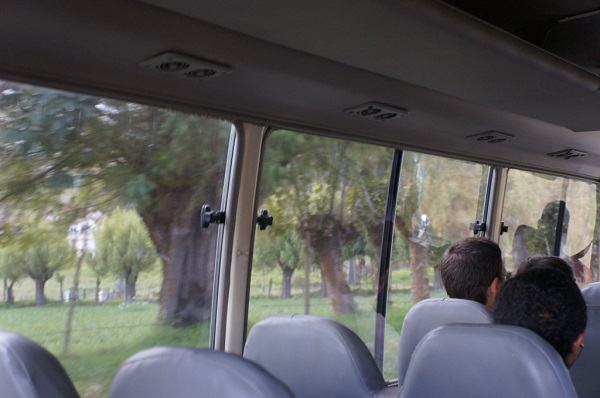 |
| A trip we took with CEA for a program. This is a private bus, which is smaller, but public buses are just coach buses in the states. |
Another way to reduce your carbon footprint is to walk everywhere! I have not driven my car in three months now and it feels great! Within San Jose, it is easy to walk to the supermarket once a week or to University everyday. Even in the small towns outside of the big city, people walk everywhere. Walking here is America's driving. In Costa Rica (within the cities) there are restrictions on which vehicles can be on roads being driven on different days of the week. Yes, this is mostly to control congestion, but this also makes more people realize that public transportation or walking is a better choice!
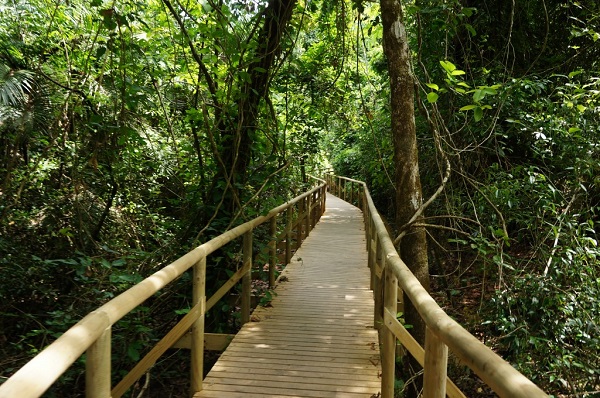 |
| Walking around Manuel Antonio |
2.Eco-lodges
Traveling is a huge part of studying abroad. Costa Rica brings in a lot of international students and travelers who are environmentally conscious as it is, but add eco-lodges and the earth folks flock (which makes for a super fun environment of its own)! There are many cost-friendly eco-lodges in Costa Rica. An eco-lodge can have many different attributes that make it eco-friendly. One eco-lodge I recently stayed at for a weekend school field trip was and is still being improved with sustainable material. The main lodge and separate cabins are made out of the timbers that were originally cut down for a pasture. They also only buy their produce from local farms, and have their own trout pond to support their thriving business with fish. The most interesting part about this eco-lodge for me was the water filtration system they implemented on the site. The water would go through levels of small pools that contained rocks and different plants that would naturally clean the water that would come from toilets or the kitchen.
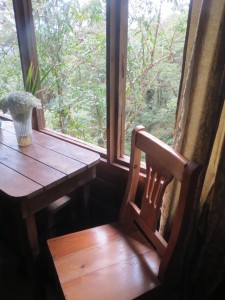 |
| Inside one of the cabins at the Eco-Lodge. The wood is from the original timbers in the area. |
3.Organic Markets and eating locally grown food
In San Jose, there is an organic market every Saturday! I was lucky enough to visit it this past weekend when I was exploring the city. The market was buzzing with people who care deeply about the environment and provide produce and materials from a sustainable source. Everyone brought their families (including their dogs) and spent the morning walking around speaking with friends and buying great products. Buying certified organic or locally grown food ensures two things: that the food was cultivated using sustainable and healthy methods, and buying locally-grown produce supports the local economy which then supports the community.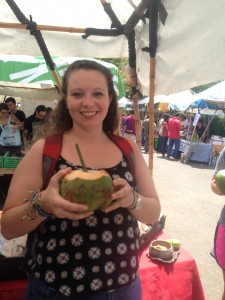
4. Education
Maybe I'm a little biased because I am normally surrounded by scientists and environmentally-aware people, but from my experience, most Ticos know a lot about their home. Even the kids know a lot. I volunteer at a butterfly garden in San Jose, and there are schools there all the time getting tours and learning. One of the most effective ways for large populations to help the environment is to be educated about the good and the bad practices and change the bad.
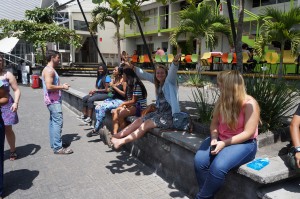 |
| My friends during a break at Veritas University |
Costa Rica is rich with experiences and forward thinking. I hope that everyone can one day experience Costa and the wonders it has to hold.
Until next time,
Nicole Schielzo
 |
| p.s. don't forget the little things that make life so beautiful! |
Nicole Schielzo is the Spring 2015 MOJO Photographer in San Jose, Costa Rica. She is currently a junior at Richard Stockton College of New Jersey.











